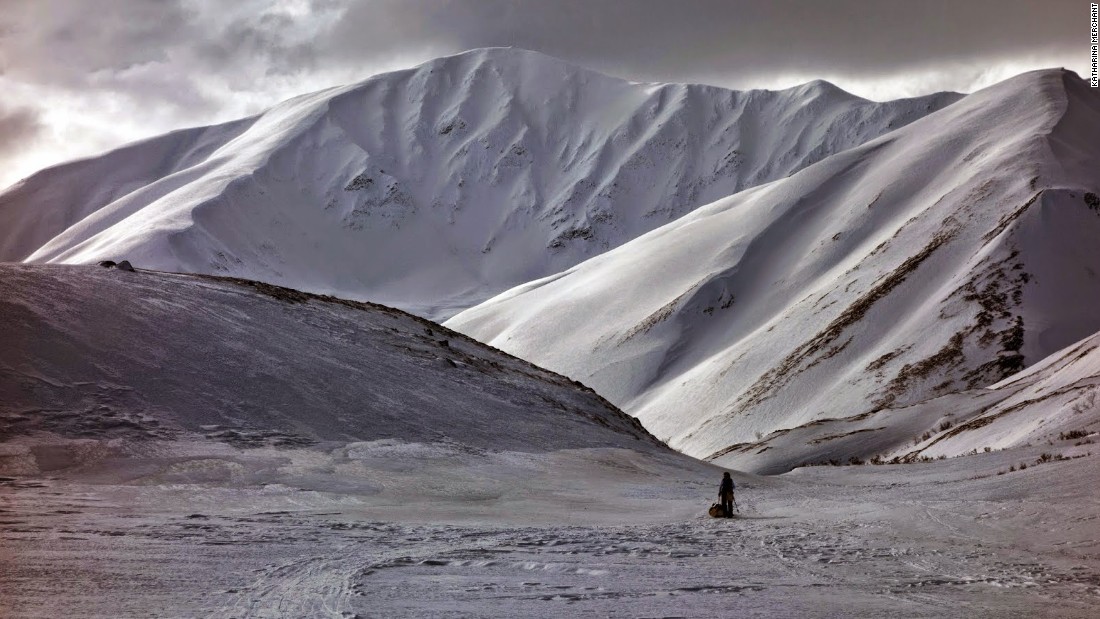
March 2, 2019 - The Iditarod is scheduled to begin.
March 14, 2018 - Joar Leifseth Ulson wins his first Iditarod.
Facts:
The race ranges from 975 to 998 miles long, depending on whether the southern or northern route is being run. The length can also vary from year to year based on course conditions.
The race ranges from 975 to 998 miles long, depending on whether the southern or northern route is being run. The length can also vary from year to year based on course conditions.
The race traditionally begins on the first Saturday in March, starting in Anchorage and ending in Nome.
The beginning of the race in Anchorage is considered a ceremonial start. The competitive part of the race usually begins the next day in Willow, but depends on weather conditions.
There may be only one musher (person who drives the sled) per team.
There are 12-16 dogs on each team. At least five dogs must be in harness (pulling the sled) at the finish line.
The most popular breed of dog is the Alaskan Husky, according to National Geographic. The animals get tested for strength and endurance before being selected.
There are about 25 checkpoints at which each participant must stop.
The musher must make a mandatory 24 hour stop at some point during the race.
The route alternates every other year, one year going north through Cripple, Ruby, and Galena, the next year going south through Iditarod, Shageluk, and Anvik.
Records:
Most Consecutive Wins - Lance Mackey won four consecutive times from 2007-2010.
Most Consecutive Wins - Lance Mackey won four consecutive times from 2007-2010.
Most Wins - Rick Swenson won five times, in 1977, 1979, 1981, 1982, and 1991.
Fastest winning time - Mitch Seavey finished the 2017 race in eight days, 3 hours, 40 minutes, 13 seconds.
Winner by a [dog's] nose - Dick Mackey finished the 1978 race one second ahead of Rick Swenson. The winner is decided by the nose of the first dog across the finish line.
First female winner - Libby Riddles in 1985.
Youngest winner - Dallas Seavey, 25, in 2012.
Oldest winner - Mitch Seavey, 57, in 2017.
Timeline:
1925 - A diphtheria outbreak in Nome, Alaska, creates an emergency need for medical supplies to be delivered, and dogsledders make the journey. The current race commemorates this mission and partially follows the same route.
1925 - A diphtheria outbreak in Nome, Alaska, creates an emergency need for medical supplies to be delivered, and dogsledders make the journey. The current race commemorates this mission and partially follows the same route.
1966 - Dorothy Page, President of the Wasilla-Knik Centennial Committee, decides to organize a dogsled race to celebrate Alaska's centennial in 1967. Page and Joe Redington Sr., a local musher, work together to launch the first event.
1967 - The first Iditarod is held, with 58 mushers competing along a 50-mile trail.
March 1973 - After shorter races in 1967 and 1969, the first full-length race takes place. The course is approximately 1,100 miles long. The first winner is Dick Wilmarth, with a time of 20 days, 0 hours and 49 minutes.
March 12, 2016 - A man on a snowmobile hits two teams competing in the Iditarod, killing one dog and injuring several other dogs. Alaska state troopers arrest Arnold Demoski, 26, of Nulato, after they find the snowmobile they believe was used in the incidents.
October 6, 2017 - The Iditarod Trail Committee revises Rule 39 after a musher's team of dogs test positive for an opioid drug called Tramadol. Before the rule is revised, the ITC determines that intent of the alleged musher could not be proven. The revised rule holds a musher liable for any positive canine drug test, unless they can prove that they are not at fault. The ITC later reveals four-time champion Dallas Seavey as the musher. Seavey denies the allegations.
No comments:
Post a Comment